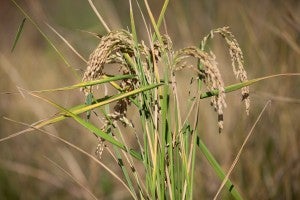 This September, a new crop will be made available to rice producers: carbon offsets.
This September, a new crop will be made available to rice producers: carbon offsets.
The California Air Resources Board (CARB) took another important step forward last week when it published the latest draft standard for the development of carbon offsets. The standard lays out the steps a producer needs to take in order to sell his new crop. Once it is approved, producers will be able grow and sell it as a new revenue stream.
So how does this work?
Rice fields are flooded as a part of growing this worldwide staple. It’s necessary for its growth. However, when water comes in contact with organic matter, the organic matter decomposes, generating methane – a strong greenhouse gas. By reducing the amount of methane generated through rice cultivation, a farmer can generate a carbon credit that can be sold to companies to offset their carbon emissions.
What are the practices that produce credits?
The carbon offset standard includes three practices: dry seeding, alternate wetting and drying, and early drainage. “Drill seeding” or “dry seeding” refers to the practice of sowing dry seeds rather than sowing pre-germinated seed onto puddled soil. Alternate wetting and drying is the practice of periodically flooding and then drying down a field throughout the growing season. Finally early drainage refers to drying the field seven to 10 days early. All three of these practices reduce the generation of methane at specific times during the growing season. A producer who implements one or more of these practices can hire a company to calculate and audit the reductions in methane generated by the practice. The exact yield of carbon offsets is highly influenced by the soil type and weather from the growing season, much the same way that soil type and weather influences the yield of rice.
What can farmers do to prepare for this new “crop?”
Contact your local farm advisor and ask them about carbon offsets from rice cultivation. You may be able to participate in one of the existing pilot projects taking place in California and Arkansas.
So when rice producers take to the field this fall, they could be harvesting two crops – rice and carbon.









